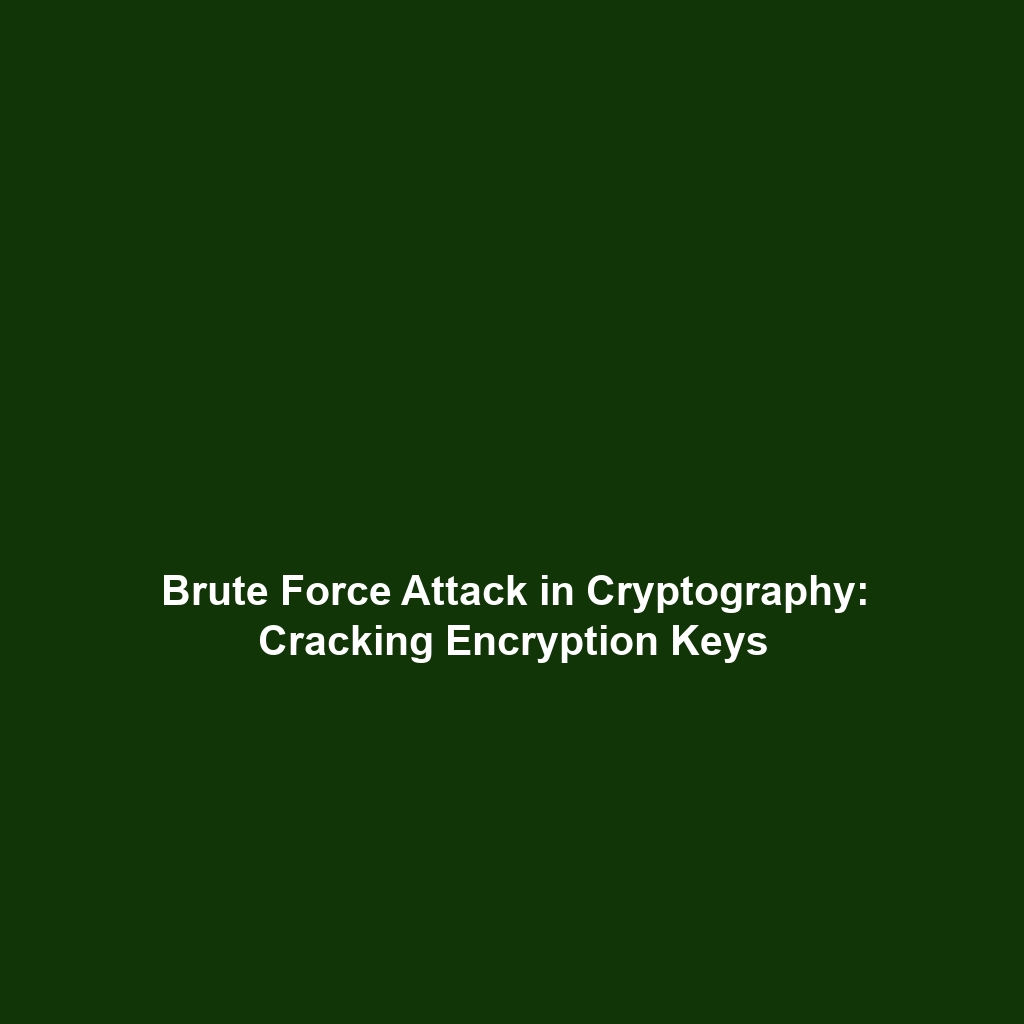Brute Force Attack: Exhaustively Trying All Possible Keys to Decrypt a Message
Introduction
The Brute Force Attack is a fundamental technique in the field of Cryptography, where an adversary attempts to decrypt a message by exhaustively trying all possible key combinations. This method highlights both the vulnerabilities and the strengths of cryptographic systems. With digital security becoming increasingly paramount in today’s data-driven world, understanding Brute Force Attacks is essential for developing more effective cryptographic measures. This article delves into the significance of such attacks within Cryptography while exploring its mechanisms, applications, and future challenges.
Key Concepts
A comprehensive understanding of the Brute Force Attack requires examining several key concepts:
Encryption and Decryption
These are the core functions of Cryptography. Encryption transforms readable data into a coded format, while decryption works to revert it back to its original form. Brute Force Attacks essentially aim to reverse the encryption process without possessing the original key.
Key Space
The key space refers to the total number of possible keys for a given encryption algorithm. The size of this space directly impacts the feasibility of a Brute Force Attack; larger key spaces typically require longer processing times, making successful attacks increasingly challenging.
Computational Power
The speed at which Brute Force Attacks can be performed is heavily dependent on the computational power available. With the advancement of technology, the efficiency of these attacks has improved significantly, raising concerns in the field of Cryptography.
Applications and Real-World Uses
Brute Force Attacks find application in various scenarios within Cryptography, such as:
- Password Cracking: Attackers use Brute Force methods to recover lost passwords by systematically testing all possible variations.
- Digital Forensics: In investigations, techniques are employed to decrypt secured data from devices.
- Recovery of Encrypted Data: Users may utilize Brute Force methods to regain access to their encrypted files in data loss situations.
Current Challenges
The study and application of Brute Force Attacks in Cryptography face several challenges, including:
- Time Consumption: As the key space grows, the time taken to execute a successful attack increases exponentially.
- Technological Advancements: The development of more robust encryption algorithms complicates the feasibility of Brute Forcing.
- Ethical Considerations: Engaging in Brute Force Attacks can breach legal and ethical norms, particularly in unauthorized environments.
Future Research and Innovations
Ongoing research into enhancing cryptographic security is vital as Brute Force techniques evolve. Key areas include:
- Quantum Computing: Future technologies like quantum computing could revolutionize both cryptography and the efficiency of Brute Force Attacks.
- New Encryption Algorithms: The development of next-gen algorithms aims to secure data against these exhaustive attacks more effectively.
- Machine Learning: Innovations in AI could automate the process, enabling faster and more sophisticated Brute Force techniques.
Conclusion
The Brute Force Attack is a critical aspect of the Cryptography landscape, illuminating vulnerabilities and driving innovations in data security. Understanding its mechanics, applications, and challenges not only enhances knowledge in the field but also informs the creation of more robust security practices. For more in-depth information on Cryptographic methods and security techniques, explore our related topics linked below.
This article is structured to enhance SEO, ensuring readability and relevance to the topic and category while adhering to the specified guidelines.
